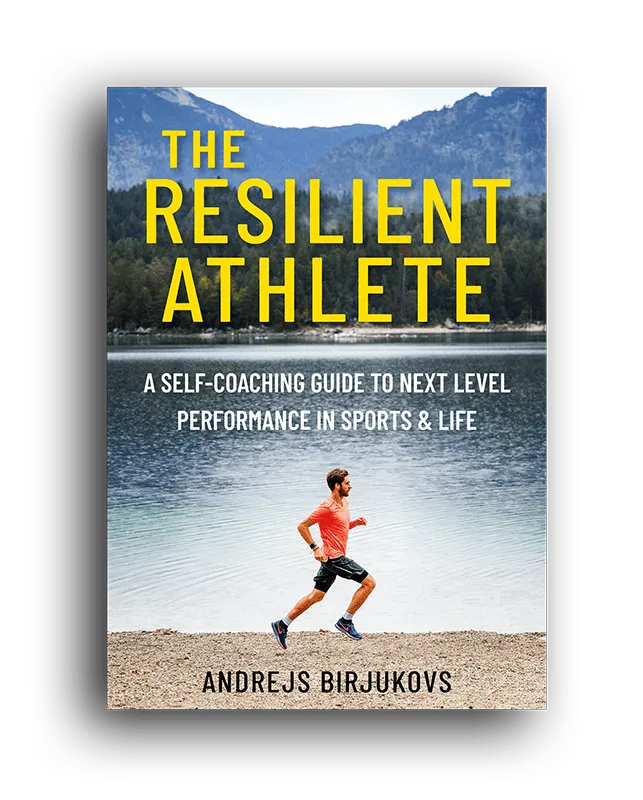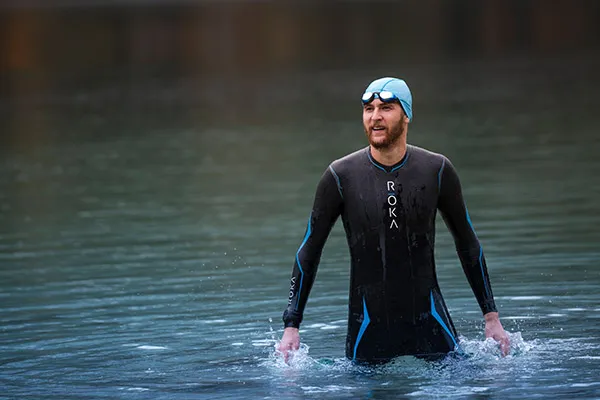Setting Goals In Sports: Ultimate Guide To Full Athletic Potential
Setting goals in sports is the first step towards any athletic achievement. Yet, many seem to forget about it. Have you ever been so excited for something in life that you just couldn’t wait to begin? Maybe an exciting project, a new hobby or even planning a trip somewhere? I bet in that moment everything felt possible and you felt energized to expand your comfort zone and reach your full athletic potential.
But then, a couple of months (or even weeks) later, we start to lose touch. That attack plan which seemed exciting on Day 1 feels daunting now. We’re not anyway near the path that leads us to realizing our athletic potential and – even worse – that initial spark of inspiration is all but lost.
We’ve all been there, haven’t we? Sounds like every New Year’s resolution in the book, eh?
Why setting goals in sports is important?
Goals carry tremendous energy. They can lift a person up or they can drag the motivation to do something all the way to the ground.
Being a very competitive and ambitious group, athletes are a great example of how seemingly great careers can be dominated by anxiety and lack of fulfilment. In particular from the gap between where people are and where they wish they were.
Ironically, setting too ambitious goals is what leads people to thinking they are ‘running around in circles’ in life.
Realizing your athletic potential essentially means becoming the best version of yourself. And that doesn’t necessarily mean fulfilling a certain lifetime or athletic goal, but rather stepping on the path of self-development. Embracing reinvention. And committing to lifelong learning.
Goals by themselves are there to create structure in life (which most of us need). However, too much focus on distant abstract future and not enough on the present moment is what makes that internal gap grow.

Why am I not achieving my goals?
Let’s come back to those resolutions for a moment, shall we?
We know New Year resolutions don’t work. Or we don’t stick to them. We try for a while, lose interest or momentum (or both) and come February, that initial excitement is gone and we’re back to our old routines. Or even worse – shaming ourselves for not following through on our commitments and not realizing our athletic potential.
The amount of people in the gym in February compared to January is a good example of this.
The reason these resolutions don’t work is because in most cases those are not real goals and they don’t determine our potential. Those are wishlists. Hopes for a better future in the new year. Not actual priorities that are backed by deep self-reflection.
So, how can we do better?
The 3-step formula for setting goals in sports
What can we do to wake up every morning feeling grateful and energetic? To feel empowered to take control of our lives? With a mindset to attack every day and achieve our full athletic potential?
The answer to this lies in the last question – every day. Goals we set must bring us to the present moment. Every small decision we make and small action we take matters. Our life is a series of such small moments and if we make those count we will be in a great position to make an impact on our life and put ourselves on a growth trajectory.
In this post I’ll share a framework that not only helps in setting goals in sports to reach your full athletic potential, but also to stay motivated in life.
Step #1: expand comfort zone by framing the mind for success
It all starts in the head. The mental state we are in at any given moment will define how much energy we have. And whether we use that energy to put in the daily effort.
This is where we can learn a lot from world class athletes. They succeed because they have a dream and a vision to be the best version of themselves. More often than not that hunger and unshakable confidence are more important to reach your full potential as an athlete than environment or equipment. A person with the right mindset will make a way where there isn’t any.
Evaluate where you are before setting off somewhere
The first step in planning any journey is to establish where we’re starting from. In particular, what is it that we want to change in our life?
When setting goals in sports it’s important to think of all areas of life. Nothing in our life exists in isolation. At any given moment we are impacted by several things – how strong and deep our relationships are, how financially stable we are, how healthy we are, how fulfilled we feel in our career, etc. Ask yourself:
- Where do I want to be in every area of my life?
- What needs to happen for me to get there?
- What one thing I can do right now to start closing that gap?
This Gap Map is an amazing tool to help determine where you are in life, as well as how to get where you want to go.

Create an exciting vision to stay motivated in life
We all want to be moving somewhere in life, don’t we? It’s just who we are. Not facing the same problems. Having deeper and more meaningful conversations. Taking up new and more exciting projects.
We desire progress, which is why we are setting goals in sports in the first place. But that progress has to be towards something important to us, otherwise what’s the point? Often motivation behind the athletic goal (not the goal itself) will determine whether we achieve it or not.
People are more likely to do something and do it good when they know why they are doing it.
Agree with yourself on what is it that you truly want. What is your own vision for the future. Phrase it whichever way you want. One phrase, one sentence or one paragraph – doesn’t matter. Ask yourself:
- What kind of person I want to become?
- What kind of life I want to lead?
- How do I want to be perceived by others?
- What impact do I want to make?
There’s no urgency to ‘complete’ the vision, because it’s not specific. It’s more like a theme (for the year or for entire life). The most important thing is that it is inspiring and energizing to help get through the hard bits.

The Resilient Athlete
A Self-Coaching Guide to Next Level Performance in Sports & Life
Are you aiming to become a resilient athlete who is able to withstand any pressure? Be able to jump on any opportunity? Take any challenge life throws at you head on?
Then this book is for you.
Learn moreMake a conscious decision to change
Planning to accomplish something new is useless if we’re not ready to change. Unless we truly decide to leave our old selves behind we will always refer back to old habits and come up with excuses why we are not doing what we should be doing.
These excuses usually come from us trying to avoid pain in life. Uncertainty from stepping out of the comfort zone. Lack of confidence in doing something new. Fear of rejection.
But it’s important to remember that pain from changing is short and temporary. The kind of pain athletes experience when they push themselves – it’s necessary to become stronger. Pain from not changing (regret), however, will only grow.
Real change always starts with self-awareness. So, ask yourself:
- How much it costs me to continue doing what I’m doing?
- What will happen if I don’t change and what will not happen if I don’t change?
- What will happen if I do change?
So, in the words of Tony Robbins, if you want to conquer the island – burn your boats. Leave no room for excuse. Make change a must instead of a should and you won’t have any other chance but to succeed – somehow we always make our musts work. It’s when we kinda-shoulda-wanna do something things ‘don’t work out’ for us.
Choose the lead domino
A great way to enable personal transformation is to determine what small action will have a positive impact on as many life areas as possible and make that a priority. That one small action done consistently will create a snowball effect in all areas of life.
Take waking up 1 hour earlier, for example. It’s a simple action, but how much positive change it can bring. It frees up time for training, meditation, journaling, practicing hobbies, spending uninterrupted time with family and working on personal projects. Not to mention that it requires going to bed earlier, which leaves no room for late-night snacking and binge-watching TV. Just imagine how health, relationships, motivation and life satisfaction will be affected from this small change?
Read also: 5AM Morning Routine – Best Habits For A Productive Mornings
In a similar way this can also be done for the area of life that lags behind. For some working on improving the quality of relationships will provide a deeper sense of fulfillment and a more healthy mental state. For others it will be the physical body. And so on – you get the picture.
Dig deep and be creative with setting goals in sports
How one goes about achieving something that seems impossible? Or something that he/she hasn’t achieved before?
The answer lies in a well-known saying when we do what we always do we get what we’ve always got.
When setting goals in sports ask yourself what is one thing that I’m not doing which I should be doing? Often that one thing is something uncomfortable or scary which was put off for a while. But that’s exactly the kind of thing that brings different results and gets people closer to achieving athletic goals that seemed impossible before.
Uncover key habits before setting goals in sports
A big obstacle in the process to reach your full athletic potential is that willpower is a finite resource. We start every day with full mental batteries and ‘consume’ them throughout the day. Which means making right choices in the evening gets increasingly tougher and we’re more likely to procrastinate on chasing our personal or athletic goals and dreams.
Luckily, there is a solution to this problem – systems. In particular, establishing empowering rituals and developing good habits are two great ways to put willpower on autopilot.
Sure, it will require some organization, but what would you rather choose – the pain of discipline or the pain of regret? As with making the decision to change, pain of discipline is only there when you push yourself to start something. Pain of regret lives on forever.

A good way of discovering which rituals and habits to implement is to ask yourself:
- What am I doing or not doing that’s holding me back?
- What’s stopping me from giving my absolute best?
- What has to change for me to make progress towards realizing my full potential?
- What should I stop doing to start changing and what can I do instead?
Step #2: set ambitious, empowering & inspiring goals for success
After being honest with ourselves about what we wish to achieve and why it’s time to map out the route. This is the time to write your goals down.
The trick behind effectively setting goals in sports is to make them inspiring and motivating. Only then we will feel empowered to get the work done.
Stay motivated in life by setting scary personal goals
Our brain needs a challenge, otherwise it will stagnate. In fact, without pushing ourselves to do something uncomfortable we will fall behind, because the world around doesn’t wait for us to catch up.
Think of what you want to have or achieve if you knew you couldn’t fail. Let the inspiration flow and list down all the crazy ideas. When done select one or a few and think of a way how you would make it happen if you would put your best effort in.
Shoot for the moon. If you miss it, you might hit a star.
Be it a physical challenge (like finishing a first Ironman) or a personal one, doing something that scares you is a great way to push the mental barriers.
Don’t limit yourself with what you think you can achieve. Nobody knows where the true limit lies.
Read also: Peak Performance Mindset – 21 Secrets How To Achieve More In Life
The key to setting goals in sports is to place milestones along the way
There are two types of athletes. Those who withdraw from a race if it doesn’t go as expected or gets too intense and those who finish no matter what place they come in. Same goes in life – there are people who quit because they don’t see quick progress and those who adjust their effort but stick till the end.
To think about it, isn’t it crazy to abandon a dream just because it’s too ambitious?

There is a mental trick athletes use in racing. When the pressure is on and everything hurts it’s important not to think of how much distance is still left to cover. Instead, focus on one small bit at a time – run to the next turn, swim to the next buoy or even count the steps.
In a similar way breaking down goals into smaller parts makes them less intimidating and more achievable. Focusing only on the immediate next steps also helps to reduce stress by taking the mind away from the bigger task and bringing it to the present moment.
Set short-term goals instead of long-term goals
Building up on the previous point, timeline of the goal also plays an important role in the overall success and the feeling of accomplishment.
When we set long-term goals the deadline is in a distant future and there’s no urgency in chasing that goal now. There’s still time tomorrow, right?
However, when the deadline is near the magic starts to happen. All of a sudden we are able to focus well, we see clearly what‘s important and what’s irrelevant. That’s the beauty of short deadlines.
Any students here who waited until the last week before submission deadline to start writing the course report?
Realising that something needs to be delivered soon helps us focus only on the most important and get it done.
Short-term goals, essentially, put us in the present moment and help to keep our mind sharp.
An effective approach to setting goals in sports setting is to set quarterly goals. Or – better yet – monthly. This helps to review the results often and adjust further goals along the way.
Even if we fail to achieve the goal (which is not the end of the world), we don’t need to wait for the end of the year to ‘accept it’ and start planning something new.
Stay motivated to reach your athletic potential by framing goals positively
One theme that often comes up in New Year’s resolutions and overall goal setting (in sports or otherwise) is restriction. For example, lose weight, stop procrastinating or quit smoking. While the motivation behind is usually strong, this strategy rarely works.
Truth is, focusing on what we need to give up is not that inspiring.
When we are working to get away from something time will slow down and we will dread the experience. If we are moving towards what we really want, on the other hand, time will fly and we are more likely to find the energy to do it.

Also, when we focus on what we don’t want, we tend to get more of it. For that we can thank the mechanism in our brain called the Reticular Activating System. It filters out unnecessary information and serves us only the important stuff. Since ‘important’ for the brain is what we focus the most on, our thoughts have the real power to impact our life. In other words, if we tend to focus on problems, it will be hard for us to spot opportunities.
To avoid this negative mental loop try to frame the goals in a positive way and make sure the focus is on what you get to do and not on what you’re giving up. This will pull the motivation naturally, instead of use the limited willpower to force any action.
Be specific – SMART goals for athletes
Goals typically begin as random thoughts. They keep re-appearing in our heads until we recognize a pattern and turn them into wishes and desires. However, without a deadline these are just that – wishes or desires.
A good way to structure these random thoughts, make them more specific and turn into effective goals is to use the SMART goal framework. According to that every goal has to be:
- Specific – with a clear outcome
- Measurable – progress has to be clearly visible
- Achievable – realistic
- Relevant – should matter to you and be in line with your vision
- Time-Bound – with a deadline attached to it
Only after we start to be specific about our desires and schedule them they become our goals.
Create a plan how to reach your full athletic potential and take immediate action
Every worthy goal needs a plan of action. One doesn’t climb mount Everest by flying to Nepal and just climbing up. Reaching the summit requires a lot of planning and preparation – even before boarding a plane.
Think of realizing your potential like a mountaineering expedition. Plan your route (map out smaller milestones) in advance, consider resources that you will need along the way, think of the people who can support you, things that can go wrong and how you would manage that.
However, it’s easy to get stuck in the planning phase and get caught by the ‘analysis paralysis’. To plan something and then re-plan whatever was planned, because things have changed. This lack of momentum is often what stops people from achieving their big goals.
The trick to making progress and reaching your full athletic potential is to conclude the planning phase with an immediate action. Think about one big step you can take right now to make the goal possible and jump right in the action by taking it.

Step #3: Follow up to live up to your full athletic potential
What comes after planning? Execution!
Inspiring goals are defined and written down. The process of transformation is kicked off.
How to stay on track and don’t fall of the wagon? How to keep making progress towards realizing your full potential?
Visualize how accomplishing goals will feel
‘Mental imagery’ is a great tool many athletes use on their journey to greatness. Throughout the training process they visualize themselves going through a race experience in all details, handling potential setbacks and even winning.
First you have to win in your head – the rest will follow. Michael Phelps takes this mental rehearsal to heart and goes out of his way to see himself winning. No wonder he’s the most decorated Olympian.
This technique can be applied to any area of life – not only sport. When we visualize something in our head we make an emotional connection with it, as if we’re saying ‘I am worth it’.
The brain cannot distinguish between something that is real and something that’s vividly imagined.
When practiced consistently, this kind of conditioning helps to develop absolute certainty that is needed to reach your full athletic potential. This certainty makes the outcome seem real and the brain will find the way to make it happen.
Start envisioning the experience of accomplishing goals. What would it feel realizing that you’ve achieved your goal? What thoughts and emotions would run through your head? How happy, excited and fulfilled you would be?
Check in daily with your vision
Having an exciting vision is crucial for being energized and staying motivated in life. But it’s not enough to write it down once and forget about it.
For vision to come to life it needs to be engrained in everything we do – actions, decisions, habits, thoughts, etc. Only then it will give a strong sense of purpose and direction. The most effective way to do it is to remind yourself of it every day.
Adopt a habit of consistently writing down your thoughts – preferably in a diary. It’s a great practice not only to to become more self-aware, but also a great opportunity to sit down and reflect on how aligned you are with your vision.

Involve others in your journey to stay accountable
When setting goals in sports, share them with others to add additional level of accountability to yourself. The fact that you need to share an update on how you are progressing towards your goals will serve as a great motivator to remain consistent and stay true to your ambitions.
This is one of the reasons why working with a coach is so effective. A good coach will keep you accountable, but also support when you most need it. Reach out if you’re looking for coaching.
Another great way to stay on track with your goals is to start a blog or a community. Besides reminding you about why you’re on this journey in the first place, involving others makes it more than just you. We are 7 billion on this planet and there’s a high chance someone is going through the same experience and needs support. Or can offer support.
Read also: 5 Strategies How Athletes Can Use External Accountability For Motivation
Celebrate smallest victories on your way to reaching your full athletic potential
I shared earlier how we need to win in our heads first before winning anywhere else. Well, winning more is a great way to make yourself feel like a winner.
A great way to ‘practice winning’ is to appreciate and celebrate achievements or excellent performance. Whenever that occurs and however big or small it is.
Such celebrations will serve as something to look forward to and is a great way how to stay motivated in life. Without appreciating small achievements it’s easy to reach a certain level of success only to realize that the journey gave more fulfillment than the actual result.
Did you find this information useful? Share the post with others using the buttons below.
Have an opinion? Share via links below and tag @theathleteblog
Andrejs
GET A FREE TRAINING PLAN
Subscribe to my email list and get access to a free 4-week “back in shape” training plan
You’ll also get two full-body strength sessions and some other goodies!

How did I get here?
Hey there! My name is Andrejs and I am here to inspire, entertain and get you fit for any adventure.
I went from being an over trained pro athlete to an endurance coach sharing how to listen to your body and live life to the fullest.
Traveling, new sports & activities brought new meaning to my training and made it much more effective, fun and enjoyable. And I'm here to help you do the same.


